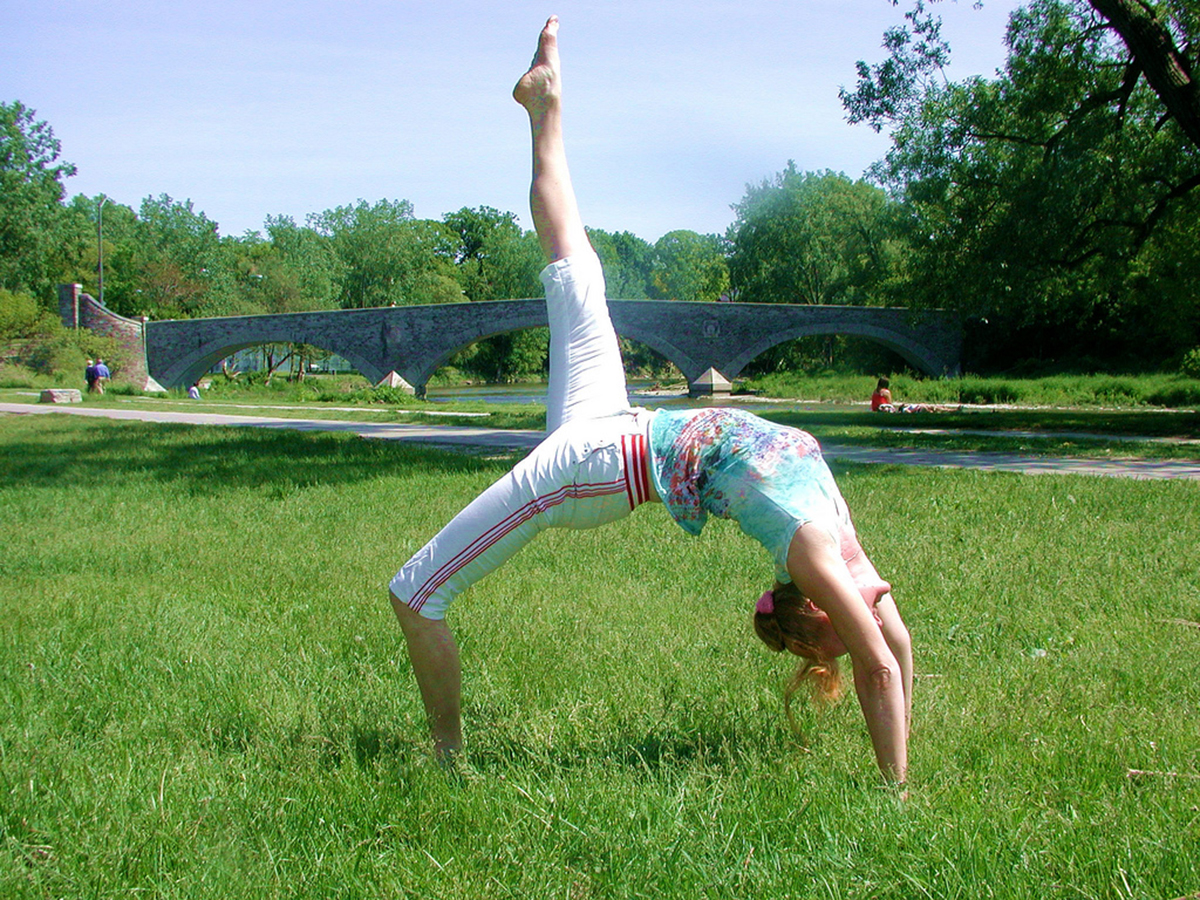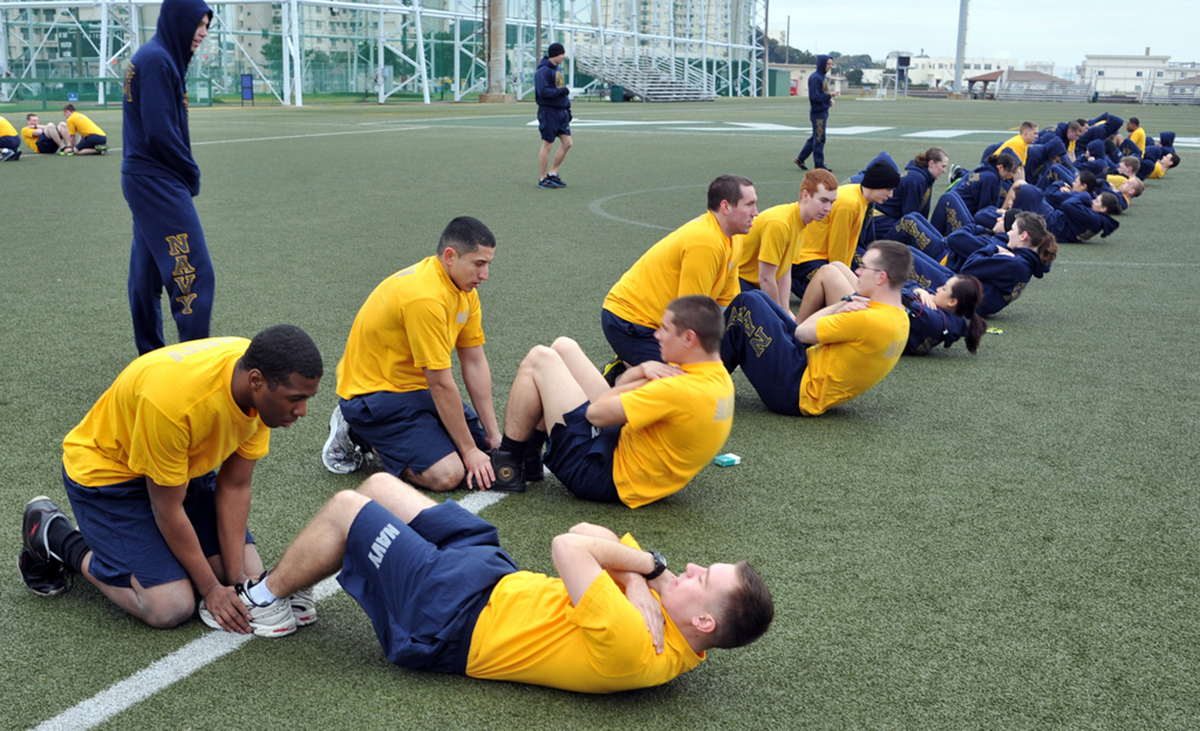Posture is at the basis of basically everything we do working out — or don't do — in the gym. A good posture can make the different between a good and bad workout. If you have the wrong posture in the gym, not only will the workout be less effective, but it might even harm you.
Good posture can make you stronger and protect you from injury, but there's more than just one "good" posture. When it comes to working out, there's three basic postures that everyone should know to succeed.
When we learn weightlifting we learn one posture - hips back, chest forward and high, shoulders retracted, spine arched, the 'muscle beach' pose posture that's necessary to support heavy weights. When we learn gymnastics we learn the opposite posture, the hollow body in which the shoulders can be forward and hunched as long as the core is tight and hollowed. And when we learn kettlebells we learn a posture that's in between.

We should all be able to do all three of these postures and in this piece I'll share some drills to get there and some correctives for when you get stuck.
First posture is ‘Muscle beach’ posture
This exaggerated ‘muscle beach’ posture is vital to protect the spine against shearing forces when you’re picking something heavy up off the ground. At the top position of squats and deadlifts, you’ll find yourself in this posture.
If you have trouble getting into this position, it’s usually a result of weak thoracic extensors. You need to be able to find the base of your T-spine, where it meets the lumbar spine at the base of your rib cage, and ‘hinge up’ from there, lifting and expanding your whole chest and upper back.
To get there, try these drills:
1: Foam roller extensions
If you don’t have a foam roller, use a makeshift one like a rolled towel or firm bolster. Lie on your back, with the soles of your feet on the floor and your legs bent. Put the roller under the transition between your T-spine and L-spine – that’s just under your floating ribs. Then lie back, hinging over the roller. Some people will notice a slight increase in flexibility; others will hear a series of loud cracks as facet joints that have been snarled up for years come loose! Don’t try to force this, and do a few repetitions: the aim is to improve so make sure you don’t hurt yourself!
2: Front squats
Huh? Front squats are one of the best mobility and stability drills out there. You just can’t do a front squat with crummy spinal erectors and a collapsed chest, you’ll drop the bar. Put a weight you can feel on the bar, but no more – it’s just there to guide you, you’re not trying to beast your way through this. Concentrate on locking that arch in your back in all the way down, keeping your neck packed and elbows high. Do a couple of sets of 10-12, working on depth and quality, and feel that tightness in your T-spine as your erectors spinae pull you into shape!
Read More: Guidelines and Exercises that Improve Posture and Strengthen Back Muscles
3: Bridges
Bridges are a bodyweight equivalent to front squats for our purposes. Do full bridges, let your head hang and use your spinal erectors like callipers. Expect to find out where your traps are too!
The second posture is one many of us never learn.
Second And Third Posture: Hollow Body Posture And The Kettlebell Posture

Where the ‘muscle beach’ is designed to attach a load to the legs via the spinal erectors, the hollow body is designed to attach a load to the arms via the core. Here’s how it’s done: Lie on your back on the floor, with your Head and shoulders clear of the floor but the rest of your spine right down to your hips in contact with the floor. Have your legs straight and your heels almost touching the floor. That’s a ‘hollow body.’ Fun, right? Well, even if you’re not interested in gymnastics, you should work on this posture anyway, because it helps correct the anterior pelvic tilt the muscle beach posture encourages, and it also helps build strength in the core.
Use these drills to get it:
1: Hollow body/hollow body rock
Start out with the instructions above. When you can hold it for thirty seconds or so, try beginning to rock. Your hips should leave the floor, your body should never ‘unhollow’ and apart from that you can please yourself, though the neater it is the better (and harder!)
2: Curl-Ups
Hang off an overhead bar. Bring your knees up to waist height with your legs bent, then bring them up to your chest and at the same time lean back til your back is parallel with the ground. You’re now in the ‘tuck front lever’ position. Return to a dead hang under control and repeat. However fit you are, two sets of ten of these will probably be enough.
The final posture we all need is the kettlebell posture
Maybe we should think of this one as the neutral posture: unlike the muscle beach posture with the chest expanded and the back strongly arched or the hollow body with the chest and back arched the other way, this one is a formalized ordinary stand. When you clean a kettlebell to the racked position, this is the posture you use.
Here’s how to get that extended-hip neutral posture:
1: Kettlebell swings
Just swing. As you swing, concentrate on extending your hips, keeping your back fairly upright at the top of the swing (don’t lean back as an excuse for hip extension) and pull your shoulderblades together.
2: Kettlebell rack walks
Rack a kettlebell and walk with it. If you try to do the muscle beach posture while you do this your chest will push the kettlebell out of the racked position; if you try to do a hollow body it will pull you over forwards. Walking with a bell racked like this will help reset the lengths of the muscles in your hips, meaning you’ll be healthier and stronger when you come to do your sport.
Read More: 10 Tips for Improving Posture and Ergonomics
If you have any questions, or you want to share your experiences, get hold of me in the comments below!
- Photo courtesy of Sarahsvati #1 by Flickr : www.flickr.com/photos/82376679@N04/7565502588/
- Photo courtesy of Commander, U.S. 7th Fleet by Flickr : www.flickr.com/photos/us7thfleet/8242155237/


Your thoughts on this